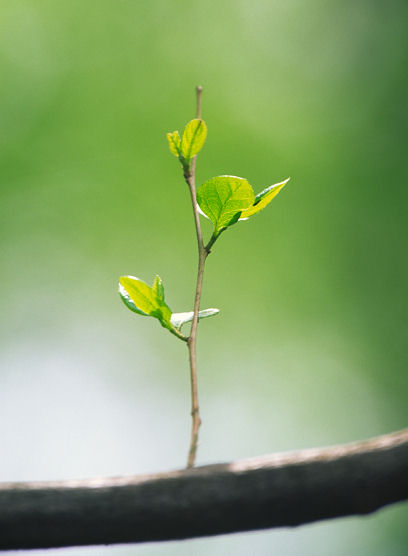Green investment is an investment in a company which aims to actively improve the health of the environment by introducing new, clean (green) technologies.

We consider industries such as renewable energy, energy efficiency, reforestation to be green industries. We discuss many other interesting green industries here.
Markets for green investments are maturing fast.
One of the main reasons for that is, of course, the fact that the dangers of environmental degradation and global warming have become all too apparent to ignore. Not to mention business cost reductions that new technologies are expected to generate.
As green companies are looking for new ways to help the environment, so are green markets bringing a wider set of tools for investors to choose from.
The types of green investment which you can now find on the market are:
- Green stocks
- Green bonds
- Green mutual funds
- Green savings accounts
- Green money market accounts
- Green certificates of deposit
As with traditional investment instruments, each type of green investment offers different levels of risk and return.
Green stocks naturally offer a possibility of higher returns at the expense of higher risk.
Conversely, green bonds are less risky instruments that will bring lower returns than stocks.
If you are confident of your knowledge, you may well go ahead and build your own portfolio of green stocks and bonds depending on your risk tolerance.
But for those investors who don't have investment expertise or time to research different options individually, there are green mutual funds.
Importantly, green funds also offer the benefits of diversification by investing in a multitude of different companies.
Other, safest types of green investment include green savings accounts, green money market accounts and green certificates of deposit.
Green Stocks
Stocks are instruments of a company’s ownership; they bear higher risks as compared to other types of green investments, but offer higher rates of return.
As an environmental investor, you probably want to invest in genuine green stocks, i.e. stocks of a company whose main focus is to provide a solution to a certain environmental issue.
In investment jargon, this company’s stocks would be called pure play.
And you probably want to avoid companies which, on the one hand, pollute the environment, and on the other, try to make up for it by doing something “green”. (A good example of that would be a major oil company).
You also, of course, expect to make respectable returns on your green investments.
You may want to learn more about the green industry (and its segments) and appreciate its environmental and financial potential before spending your money.

Investing in larger, more established green companies is less risky than investing in smaller and younger ones.
At the same time, smaller companies may offer a greater potential for growth and investment returns, and there will naturally be a bigger choice of smaller, purely green stocks than larger ones.
Pure play green companies can be mostly found on over-the-counter markets such as Nasdaq, but also on recognized exchanges such as NYSE and AMEX.
One of the best examples of a purely green company, whose stocks are now widely traded on the market, is First Solar, Inc.. First Solar designs and manufactures electricity-producing solar modules using thin-film technology. (Ref. 1)
Mergers in the Green Industry
The green industry is a relatively new area.
So there will probably be a high merger activity, as the market will be looking for best possible combinations between different companies.
If you happen to own a green company with a growth potential and a good fit for a bigger player in the industry, you may benefit from this company’s sale by receiving a premium on your company’s shares.
Green Bonds
Green bonds are a much safer type of green investment than green stocks.
They offer lower levels of risk and expected to bring smaller returns.
Green bonds are usually issued to raise capital for solving a specific local or global environmental problem, and are usually backed by governmental institutions.
For now, green bonds are at a very early stage of development.
They do not yet appear to be as readily available on the market as green stocks.
But there are already some fascinating examples of the first green bonds issued (and planned) for environmentally focused projects around the world.
In the US, federal institutions are pioneering the use of green bonds for re-development of brown field sites, following the adoption of the America Jobs Creation Act 2004 and, specifically, its amendment titled “Brownfields Demonstration Program for Qualified Green Building and Sustainable Design Projects”. (Ref. 2)
In Europe, in May 2007 the European Investment Bank issued Climate Awareness Bonds raising more than €1 bln with a 5-year maturity plan. The capital is to be invested in renewable energy and energy efficiency projects, aimed at bringing down greenhouse gas emissions and protecting the climate. (Ref. 3)
In Canada, there are serious proposals for issuing government-backed green bonds to stimulate the deployment of renewable energy production. (Ref. 4)
Green bonds are certainly an area to look out for.
Green Funds
If you are not into researching hundreds of different companies to find suitable green investment picks, and are looking for a simpler way to put your money to work for the environment , green funds (or green mutual funds) may be just the answer for you. We discuss the definition of a green fund here.
A mutual fund is an instrument that allows you to simultaneously invest in stocks and bonds of a number of companies rather than investing in just one pick.
In other words, it is a great diversification tool. This is one of the major attractions of mutual funds as compared to buying investments in individual companies.
But like with any other investment tool, there are downsides as well. You will most likely need to pay annual costs for the privilege of owning shares in a mutual fund, and there are no guarantees that this fund will perform better than if you had invested in companies of your own choice.
 Green Garden
Green Garden © Pierre Metivier
There are different types of mutual funds on the market – mostly bond funds, equity funds and balanced funds (bonds and equity).
Many green funds appear to be equity funds that invest in small- and mid- sized green companies with the potential for growth, and consequently capital appreciation.
A good example of that are Winslow Green Funds. They invest in companies which actively seek to develop new environmentally positive solutions.
There are other funds which call themselves green but apply a slightly different approach to using their investors' money.
For example, Green Century Funds invest in a much wider array of companies which may, or may not necessarily work towards developing new environmental solutions but, more simply, may be trying to limit the impact of their business operations on the environment as much as possible.
A more correct definition for a fund like this would probably be a socially responsible fund. See an explanation of the difference between green investment and socially responsible investment here.
Other Types of Green Investment
There are some other types of green investment worth discussing here.
We are talking about green savings, green money market accounts and green certificates of deposit.
So why are these investments called “green”?
They are called “green” because they are offered by financial institutions (i.e. banks) which lend the money raised from such investments to environmentally friendly businesses. In other words, if you put your money in green investments, you may rest assured that it will be used with the environment in mind.
Green Savings Accounts
Green savings accounts are the safest types of green investment you will find on the market: they offer the lowest levels of risk with the lowest rates of return.
A green savings account is a deposit account. You can access it at any time and withdraw your money without major restrictions.
There will usually be a small minimum investment requirement (ex., $250), and you will be asked to maintain this minimum balance during the life of your account (or a small monthly fee is charged if the balance falls below the requirement).
Green Money Market Accounts
 Green Field
Green Field © Piero
Green money market accounts (not to be confused with money market funds) are another savings instrument but differ from savings accounts in the following:
- Minimum investment balances may be higher than those for savings accounts;
- Offered interest rates (i.e. rates of return) are higher than those for savings accounts; the higher the amount of your investment, the higher the return you will receive;
- You will be limited to a certain number of withdrawals per month from your account.
Green savings accounts & green money market accounts are basically bank accounts that you can easily open and close whenever you want. They are not securities (ex., stocks and bonds) which you can trade on the market. They are also insured by the government, and the risk of losing all your money is much lower than for securities.
Green Certificates of Deposit
Green certificates of deposit are green investment instruments which are issued by banks for predetermined periods of time (maturity dates) with fixed interest rates. They are also called time deposits.
Green certificates of deposit can be issued for any amount of investment. But the money is expected to be tied in for a certain term ( usually from 1 month to 5 years) , and early withdrawal penalties are normally applied.
Higher sums of investment will attract higher rates of return.
Certificates of deposit are also insured by the government for up to a certain amount invested.
Conclusion
Green investment is a constantly evolving area.
Eager green investors will have many opportunities to put their money both in national and international companies.
But some pundits are already issuing warnings that environmental investing may be similar to the dotcom bubble we experienced at the start of the 21st century.
Our opinion is, that while of course it is inevitable for certain individual companies to lose value and even go bankrupt, the demand for new green technologies (and especially renewable sources of energy) is strong, and the need to fight pollution and global warming is now clearer than ever.
So green investment is certainly here to stay.
Written by: Irina Bright
Original publication date: 2008
Republication date: 2020
References
1. Google Finance (2008). First Solar, Inc. Financial Information. Retrieved September 24, 2008 from http://finance.google.com/finance?q=FSLR
2. Smith, L. (2008). Green Bonds: Fixed Returns To Fix The Planet. Published Investopedia.com. Retrieved September 24, 2008 from http://www.investopedia.com/articles/bonds/07/green-bonds.asp?viewall=1
3. Ibid., and
European Investment Bank (2007). EPOS II: Climate Awareness Bond. Retrieved September 24, 2008 from http://www.eibclimatebond.eu/index.html
4. Savory, E. (July 22, 2008). Buy a bond, save the planet. Published by CBC News. Retrieved September 24, 2008 from http://www.cbc.ca/money/story/2008/07/16/f-savory-tomrand.html